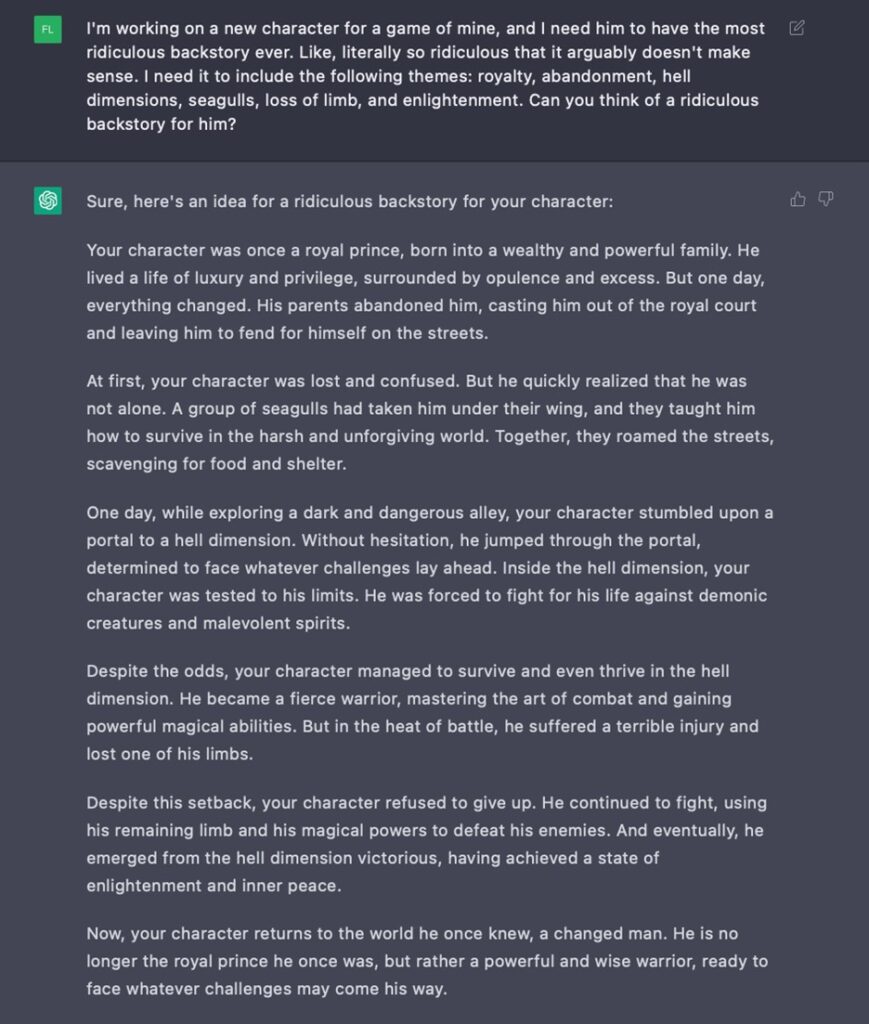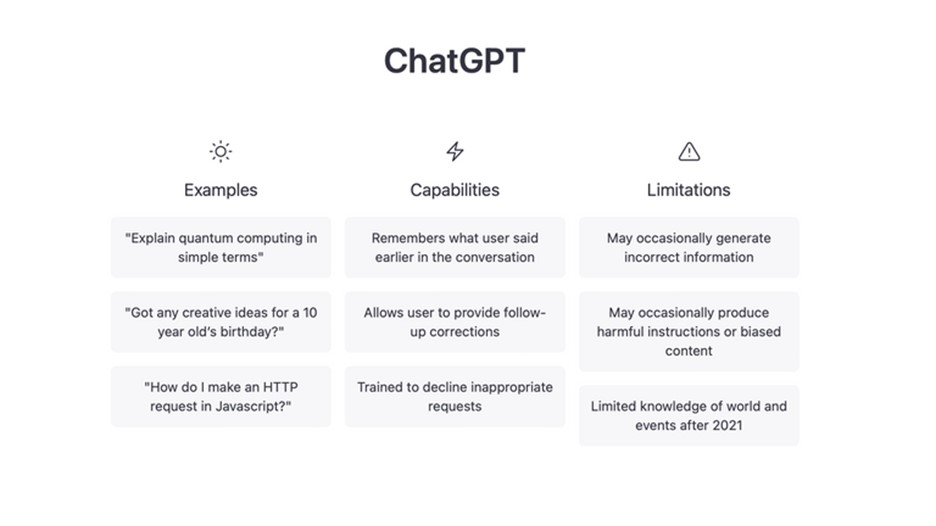On 30th November 2022, ChatGPT was unveiled making news all around the world. It gained a lot of attention and traction for its prompt and human-like answers to enquires. With this massive popularity, the software reached one million users less than a week after its launch. So, what exactly is ChatGPT and what is all this buzz about?
ChatGPT is a model developed by OpenAI, an American artificial intelligence (AI) research and development laboratory consisting of OpenAI LP and its parent company, the non-profit OpenAI Inc. OpenAI was founded in December 2015 by Sam Altman, Ilya Sutskever, Elon Musk, Greg Brockman, Wojciech Zaremba, and John Schulman. Tech giants like Amazon Web Services (AWS), Infosys, and YC Research also funded OpenAI. Later Musk resigned from the board but continued as a financer and the company also partnered with Microsoft. The company focuses on developing and promoting friendly AI in a way that will benefit humanity as a whole.
ChatGPT is a large language model that is trained to generate human-like text based on patterns it has seen in its training data. In simpler terms, it is a type of AI that allows users to interact with a virtual assistant using natural language. With a capacity of 175 billion parameters, it is one of the largest models currently available.
The model is pre-trained on a massive dataset of internet text, which allows it to generate texts that are often indistinguishable from the text written by humans. This makes it well-suited for a variety of tasks such as generating and completing texts, summarization, answering questions, and language translation. It can be fine-tuned for specific tasks by training it on smaller datasets.

The Good
One of the key advantages of ChatGPT is its ability to generate highly varied and diverse text quickly and easily. The model takes into account the context of the input text when generating its output, making it well-suited for tasks such as text generation, completion, and question-answering.
Another interesting use of ChatGPT is in the development of chatbots. Because the model can understand and respond, it can be used to hold natural and fluid conversations with users. This can be used in a variety of applications, such as customer service, virtual assistants, and more.
In addition to its use in chatbots, ChatGPT has a wide range of potential uses in:
1. Text summarization: ChatGPT can be used to generate short, coherent summaries of long texts.
2. Text classification: ChatGPT can be fine-tuned on a labeled dataset to classify texts into different categories.
3. Language Translation: ChatGPT can be fine-tuned on parallel datasets to perform language translation between different languages.
ChatGPT can be used in various industries such as education, customer service, e-commerce, healthcare, finance, and more. From Legal documents to financial analysis to cold sales pitches to corporate strategy to coding, ChatGPT checks all the boxes.
Screenshot of a conversation with ChatGPT
Since its launch, the software has found favor with a large number of users and people have started using it in their day-to-day life. This new technology is very promising in terms of the ease it brings to human lives.

Shortcomings:
While ChatGPT is a powerful and versatile model, it is not without its limitations. One major limitation is that the model is only as good as the data it was trained on. Because it is pre-trained on a large dataset of text from the internet, it may not be able to generate text that is appropriate for certain domain-specific tasks, such as medical or legal text. It may also reflect societal biases and stereotypes. This means that the model may generate biased or offensive content in certain situations.
Additionally, the model is not able to understand the meaning of the text it generates, so it is not able to make inferences or answer questions or perform other tasks that require an understanding of the content of the text. It is not able to take into account the context in which a conversation is taking place, so it may generate responses that are not appropriate for the given situation.
ChatGPT does not have a true understanding of the world and is not able to make inferences or answer questions that are beyond the scope of its training data. Unlike humans, ChatGPT is not able to reason and make inferences based on common sense.

Ban in schools
Despite being new in the market, ChatGPT has already sent many educators into a panic. Students are using it to complete their essays and assignments. Most teachers are finding it difficult to catch students trying to cheat using the tool. Some believe that the tool has disrupted classroom routines and killed homework already. Teachers fear losing their jobs as the tool can evaluate a student’s paper and give useful feedback as well.
To stop all this from happening, some schools in America have already banned the use of this tool and restricted its access to school computers. But some experts feel that the ban is a wrong move. Instead, they believe that schools should embrace it as a teaching aid, use it to increase students’ creativity, and prepare students to work better alongside AI systems. Teachers should use it as an effective training tool by using it to generate ideas for classroom activities or personalize lesson plans. Who better guides students about AI than their own teachers?
Is ChatGPT taking your job?
The interface responding so smartly and human-like to various questions, only implies that this model is doing the work of a paid human employee. From creating articles on a subject to drafting emails to create exhaustive lists of tasks, all this work is now done by ChatGPT instead of employees in companies. Around the world, many mid-level jobs are roles where such routine tasks are done by humans. It is only a matter of time before companies replace these roles and get ChatGPT to handle the tasks instead.
Since it is trained using AI, the model will only get better with time, and this will happen at a faster rate than most humans can learn and improve. It is also likely to give a much more flawless response in terms of language when compared to human beings.

Some suggest that the technology could replace even journalists due to its ability to generate human-like written text. However, at its current stage, the chatbot lacks critical-thinking skills, nuance, or ethical decision-making abilities that are essential for successful journalism. As it keeps improving, it will keep getting into more complex areas of work, even challenging roles of senior-level employees.
We might need to think about whether it is a boon or a bane to humans. On one side it has immense capabilities to help and assist humans but also potentially has an ability to replace the human effort, eventually wiping off many jobs in various industries. The fact that it can write software, as well as malware, is itself a threat to the tech world.
Time will tell the kind of impact that ChatGPT will create. It is important to remember that such tools aren’t going anywhere but are only going to improve over the coming years. It is now a part of our society and we need to figure out ways to work with the tool.
Written by Nasha Rana
Edited by Diksha Rajput
